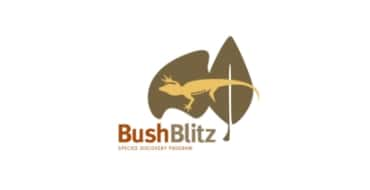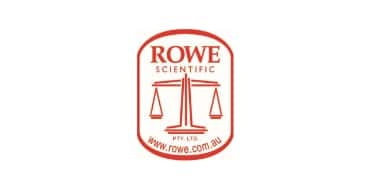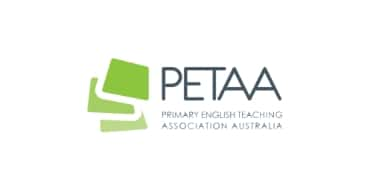
Bush Blitz TeachLive
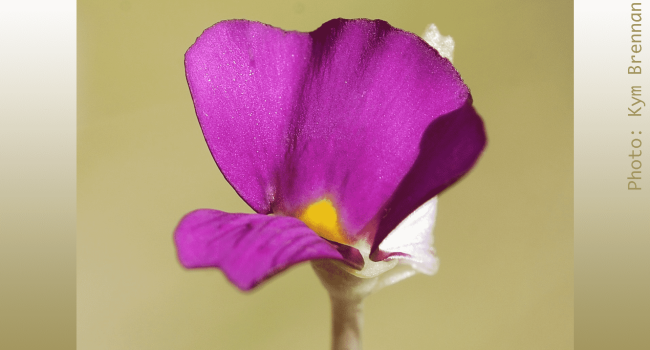
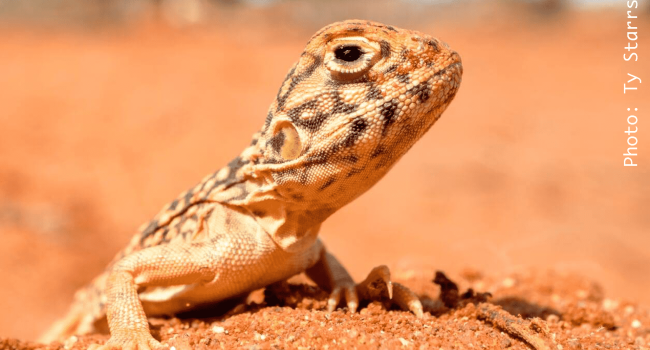
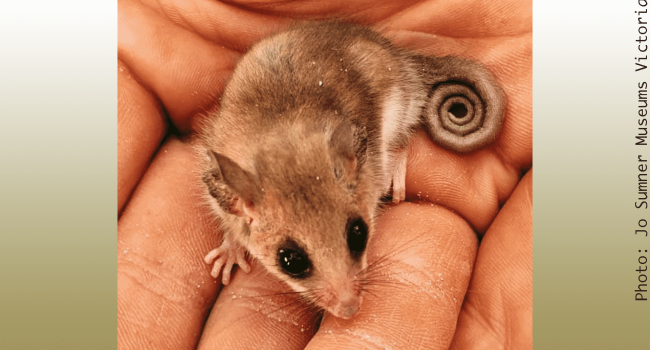
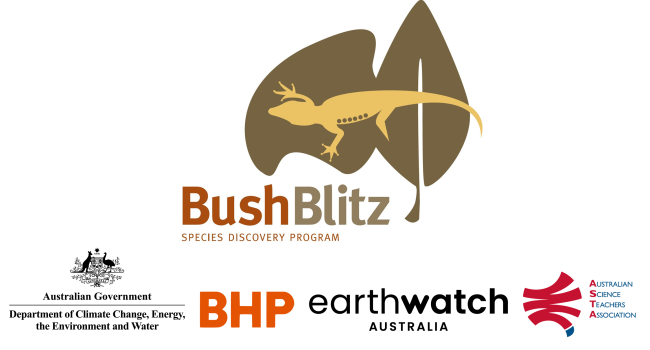
In Brief
Coming in 2023: (click for further information)
8 days (minimum of 5 school days)
Future expedition dates and duration are estimates only.
Please check the terms of each expedition for eligibility
- Create and submit a 2-minute video application, and
- Fill out an online application form
No cost!
Bush Blitz TeachLive is a fully funded professional development opportunity with all costs associated with travel, food, accommodation and teacher replacement included (up to a maximum of 6 days)
Important Notes
Due to the remote and rugged Bush Blitz sites, limited facilities and current safety protocols, it is important that you are comfortable with:
- being in the field for 8 hrs per day while walking over sometimes difficult terrain;
- being transported via helicopter and for long distances in 4WD vehicles, often over bumpy terrain;
- not having access to toilets while in the field; and
- sleeping in a tent and limited access to facilities such as showers (cold), power, internet and phone reception.
Accommodation and field environments will vary for each location, so it is important to review the specific details for an expedition before deciding to apply.
ABOUT BUSH BLITZ TEACHLIVE
Bush Blitz is a national partnership between the Australian Government, BHP and Earthwatch Australia that aims to discover, document and describe the unique flora and fauna of Australia. It is the world’s first continent-scale biodiversity survey providing the knowledge needed to help protect Australia’s biodiversity. www.bushblitz.org.au.
Bush Blitz TeachLive is an exciting and unique professional learning opportunity for teachers to participate as research assistants alongside leading scientists on Bush Blitz expeditions. They learn hands on scientific research skills while helping to document plants and animals and potentially discover new species.
While in the field teachers share the experience with their students through virtual lessons (crossing live to their class via video calls and other online tools) and regular blog posts on Bush Blitz TeachLive website (https://www.earthwatch.org.au/Blogs/teacher-blog).
The interactive nature of the Bush Blitz TeachLive program is an engaging way for teachers to improve their web-based teaching skills, learn current scientific research techniques, work in a team with world-class scientists and other teachers and learn more about unique Australian environments.
Watch the videos below to see the experiences of the teachers who participated in Bush Blitz TeachLive in the ACT in 2018 and Little Desert in 2019.
The Bush Blitz TeachLive program seeks to:
Educate teachers and students about Australia’s biodiversity and the importance of conservation.
Inspire students to pursue further studies in STEM and geography subjects by exposing them to real and exciting scientific research in an Australian context and building their core skills and knowledge in science and biodiversity conservation.
Inspire and build confidence of teachers to be scientific role models for their students.
Increase the quality of STEM/geography teaching through building teachers’ scientific knowledge and research skills, and providing them with a transformational experience that motivates them to pass on this knowledge and skill to their students.
Encourage teachers to share their Bush Blitz TeachLive experience with their schools and wider communities, through implementing biodiversity and conservation projects or activities.
* To be eligible for Bush Blitz TeachLive expeditions, you must be an Australian primary or secondary teacher currently based in an Australian school. Eligibility criteria may vary between expeditions, so please refer to the details provided for each expedition.
The Bush Blitz TeachLive team are looking for a committed but diverse range of teachers to assist scientists on the 2023 Bush Blitz TeachLive expeditions.
Bush Blitz TeachLive provides the opportunity to broaden teacher knowledge and experiences beyond the classroom. You do not need to be STEM or geography trained nor an experienced teacher, you just need to be passionate and keen to share your experiences with your school community. We particularly encourage teachers who might benefit from participation. These could include early career teachers, teachers with limited experience in teaching the STEM disciplines, experienced teachers who are keen to improve their fieldwork skills in order to instruct their students and/or teachers that want to actively demonstrate to their students the biodiversity of Australian ecosystems.
- To be eligible you must be an Australian teacher currently based in the indicated eligible states and/or territories for that expedition.
- If you have previously participated in Bush Blitz TeachLive, you will be ineligible to apply.
- Education providers outside of schools (such as environmental education providers) may also receive lower priority, as the program requires teaching “live” direct to a class.
Selection for Bush Blitz TeachLive is a competitive process. Applicants are assessed for their eligibility and enthusiasm, plus their commitment to fully participate in the program. The number of applicants can be very high, depending upon how many states and territories are open for applications for a particular expedition.
We encourage teachers to let their personality shine through and to think carefully about their application responses, so that they have the best chance of being considered.
ASTA will seek confirmation from shortlisted applicants’ school Principals to ensure that the school understands the requirements and supports their teachers’ application, prior to offering them a place on an expedition.
See the “How to apply” information provided on each expedition page for specific details about the application requirements and selection criteria for that expedition.
The final selection of teacher participants is at the discretion of the selection panel, which includes representatives from Bush Blitz, Earthwatch Australia and ASTA.
A fully-funded place on a Bush Blitz TeachLive survey includes:
- Travel reimbursement for getting to and from the Bush Blitz
- Accommodation in the field
- All meals while in the field
- Teacher replacement costs*
- Training in field research methods
- Training in website content management
- Detailed briefing materials prior to the expedition
- Bush Blitz TeachLive merchandise.
* Only standard school days during the stated expedition period, and where teacher replacement costs are actually incurred, are eligible for school reimbursement, up to a maximum of 6 days. Distance or remoteness may mean that some participants need to travel on school days at either end of the expedition period, which are generally not eligible for teacher replacement costs. In such cases, teachers should make private arrangements with their school for those additional days.
This program will require a dedicated commitment by teachers. These commitments are described in greater detail on each expedition page. Briefly, successful applicants are expected to commit to the following:
Pre-survey commitments
- Group induction and web training seminar.
- Available laptop.
- TeachLive planning with the school.
- Acquire the necessary IT skills to livestream or record.
- Reasonable physical fitness.
During-survey commitments
- Fieldwork participation both daytime and evening.
- Daily web blogging.
- Teaching “live” online.
Post-survey commitments
- Prepare 3-4 lesson plans.
- Written reflection about your experience.
- Implementation of a biodiversity-themed project at your school.
- Ongoing evaluation of the Bush Blitz TeachLive program with Earthwatch Australia.
Detailed information about how to apply is provided for each separate expedition, as these may vary from time to time.
Generally, you will be asked to
- submit a recorded video “pitch”, and
- complete a written application form via Survey Monkey.
After each Bush Blitz TeachLive expedition, our teacher participants are asked to submit a reflection about their experience. Below are some recent submissions.
One Perfect Day – by Louise Edwards
I can’t help thinking lucky me
One perfect day, flight to Cairns
Four teachers only chosen, lucky me, why me
One perfect day, driving the Savannah Way
Crisp, fresh, gentle breeze curling around my face.
Bright blue sky slowly replaced by sunset oranges, pinks and yellows
Sounds of nature calling me to remember
Remembering we are but one species on this special Southern land
Remembering before colonisation there were People here
They survived, they are still here, People deeply connected to this land.
Always the sun
Ewamian people managing and protecting all
Challenge
Bush Blitz stepped up
Working together to collect flora and fauna data
Nature discovery project to help protect biodiversity
For our future, all future generations.
One perfect day, real joy together
Helping each other find new species together
One perfect day, I’m meant to be here
We can change the world, just get out there and do something
My students will be part of the solution of caring for this land
We are all standing on sacred ground together.
Kimberley Reflection – by Fiona Jancey
I was told about the Bush Blitz Teach Live expedition by a long-time friend of mine on the East Coast. She is not a teacher and she hates camping. She knows I love it and has listened to many stories of my adventures driving and camping all over Australia and growing up and working on a dairy and beef farm. She also knows how interested in the natural world and animals I am. She said to me that Earthwatch were looking for teachers to apply, and she thought it would be something that I would be really interested in. As soon as I researched what Bush Blitz Teach Live was and read the brief and the application process, I knew it was for me. Apart from the obvious travel opportunity to the Kimberley, the idea that my personal passions could be combined with my professional work life seemed too good to be true. I was intrigued that there was an opportunity for me to be with working scientists and learn about a whole new world and somehow bring that back to integrate into my everyday classroom teaching life.
As promised, I followed teams of Australia’s top scientists as they conducted their research in the field each day. We were on Wilinggin Country and had permission to live and work there by the Traditional Owners, which just in itself was a special experience. The actuality was that Bush Blitz Teach Live was an incredible- once in a life-time- opportunity and experience, not only to see such remote wilderness, but to work with experts all committed to studying and protecting the diversity of the environment for the future. The enormity for me that Bush Blitz is committed to documenting and finding rare and new species in remote, undocumented places which they only go to once and teachers are only allowed to attend a Bush Blitz one time is not lost on me. What a privilege and an honour to be selected.
What was also an honour, and something I found overwhelmingly positive, was how happy the scientists were to have five teachers descend on them and join them out in the field every day. They stopped what they were doing to pose for photos, to talk with us, explain and share. This continued well into the night as they documented and catalogued their field specimens back in the lab. Being with so many people at one time who were all concerned about the environment and their own personal impact on it and generally hanging out with people who were so willing to share their knowledge was a clear highlight for me. I felt like I was adopted by these people- a new team every day- and they shared their whole focus with me, valuing the Earthwatch, Bush Blitz Teachlive concept that teachers will take their experience back to share with schools and students in an educative setting.
Other high points of the experience for me included landing on top of waterfalls in a helicopter, swimming in waterfalls at the bottom of deep gorges, going on spider hunts, and showing off my farm-life skills at opening and closing gates and helping on sites. I felt really helpful out in the field and I could see that I was genuinely useful to the working scientists. As expected, I really enjoyed camp life and living in the bush with minimal supplies. I was proud of myself for being 46 and being able to be fit and strong enough to happily keep up with the walking and the climbing and the demands of being in the hot sun out in the field all day. I had fun. My brain was busy. In every photo I am smiling and grinning from ear-to-ear. I look as happy as I have ever seen me.
In the application process I was asked to explain how I would use my learnt knowledge from the trip in my teaching. I found this really hard. What would I learn? How would I know what to do with this knowledge? Well, I needn’t have worried about this so much. From my very first arrival onto Charnley River Station I could see classroom practical transference possibilities everywhere. Picture this- five teachers get out of a car and we hear an excited scientist say, “Is that the teachers? We’re about to dig up a Tarantula, do they want to come and watch?” I was so excited. I have been teaching my year ones about Tarantula habitats ever since I returned as part of our Geography, ‘natural environment,’ curriculum requirements.
There was so much excitement and a real buzz about my adventures at my school, before, during and after the event. My Admin team were very supportive. I talked to the whole school at the assembly before I left, there were updates on our school Facebook page, on our school Seesaw account and in our school newsletter while I was away. I have addressed our School Board and I have a public notice board that teachers were pinning photos on while I was away. Since I have returned to my school, I have had so many people big and small stop to talk to me about my trip. This is what we want! – an entire school community aware and interested in the environment, biodiversity and what we can do to protect and nurture the natural world we live in.
What I have learnt through Bush Blitz Teach Live has given me a substantial platform to use in my role as Sustainability Coordinator in my school. I was able to make some contacts within the Science world, learn about Citizen Science programmes, ideas and resources that all have pedagogical connections to my school, teaching and leadership initiatives. I have also used cultural aspects learnt from the trip as part of my school’s NAIDOC celebrations and with my Cultural Officer and within my classroom. All of this already and I have only been back two weeks!
We were required to do a live cross with our class and a scientist while we were away. I loved this. There is a photo of myself and Dr Mark Harvey, Curator of Arachnids from the Western Australian Museum, that was taken by a teacher in my classroom of the TV screen as the cross was happening. I love this photo. It really demonstrates for me what I see as a distinct professional highlight from a twenty-three-year career. Me, in a remote part of Australia, laughing with a world expert scientist as I am chatting to my class of students in the deep South West of Western Australia. Surely, it can’t get better than that!
As part of the commitment of being involved in Bush Blitz Teach Live, I am now required to write lesson plans for educational purposes. This is exciting! This is not a chore. I am brimming with ideas. I have been teaching for a long time and I really feel that this experience as reinvented my career. For the new teachers that were on the trip I could see that it would shape their careers. I am very grateful. I feel like the expedition was made for someone like me. I could not recommend Bush Blitz Teach Live more highly. It was everything it said it would be. It was everything it could have been… and the question everyone wants to know… yes, the food was really good.
Alps reflection – by Lachlan Hurrell
Wow I feel like I’m just landing after an amazing 7 days exploring the Pilot Wilderness area. I was lucky enough to be apart of a Bush Blitz expedition, joining scientists surveying a vast remote region of the Australian Alps. Incredible landscapes, weird and wonderful flora and fauna, heart pumping helicopter flights, amazing morning meditation spots, plenty of storytelling, new knowledge and a lot of laughs with an inspiring and passionate crew of people.
For a while now I’ve prescribed to the philosophy that the natural world is our greatest educator, its teachings provide a framework for us to understand and interpret the journey of our own lives. I am so very grateful for that week in the Australian Alps, in the calming bubble that time on country allows, from the quiet amongst the snow gums to the raw and powerful gusts of wind hitting the exposed peaks, it felt like a shower for the soul.
The experience of Bush Blitz allowed me to reflect on my role as an educator and reinforced the importance of creating learning experiences which expose children to the natural world in meaningful ways. It is paramount to expose kids to natural systems so that the inter-connectedness of life can be understood, appreciated and then reflected upon in meaningful changes in behaviour.
This experience exposed me to new and awe inspiring wilderness and people that are passionate about understanding and protecting these places. It allowed me to focus in on the leaf litter, under the tussock grass, in the quiet flow of the river stream and discuss, with experts in their field, the complexity of life that sustains these places. Quiet places where the hum and buzz of modern society disappears. Where the march flies remind you that your dinner too, and part of a big and vastly complex energy transfer system, almost unfathomable to the human mind, but understood enough to realise that everything is energy changing form.
In tangible terms for the educator, the experience grounded me with clear direction to expose others to the natural world and encourage and develop the innate language of asking why. The foundation of scientific thinking.
Alps reflection – Emma Snowden
I remember sitting down at work, after a rather busy day with my students, when upon opening my emails, I noticed an interesting opportunity to participate in a professional learning experience that the science teacher had shared. She had shared this Bush Blitz email with the whole staff. She did mention that she gets lots of emails like this but figured a few teachers may be interested in this. Having not heard of Bush Blitz before, I read the criteria for the trip – must love being outdoors and happy to be out for eight plus hours, have no problems with camping remotely, and driving in a 4WD to reach different destinations. This sounded like a dream to me. I love being in the great outdoors. In fact, the weekend before I had been hiking through dense scrub for nine hours with my usual group of friends.
My principal immediately gave me the green light to apply, and so once speaking with my family, I began the application process. The video needed to showcase my love for the outdoors, so I set about a chat group with my dear friends to recap some of the highlights of the adventures we had been on in recent times. It did not take long to come up with an excellent album of all the brilliant times of high peaks, trig hunting, scorpion hunting, and video footage of my adventuring.
Then the wait!
It was not very long. The following day, Sabrina contacted me as the video link had not worked. Great, well there goes my chance with my application showcasing a strong understanding of technology- which was needed, and I had seemingly blown it. Even though I had checked my link before submitting. As it turns out, it was a glitch on the other end, and the day after, my principal came and told me I had been successful. Woohoo!
Meeting the educators and BHP team before setting off to Jindabyne was promising. We chatted happily for the two hour drive, so when arriving at the base camp, I felt settled and ready for this new chapter in the life of a bush adventurer. As soon as we arrived, we were given a briefing on the expected schedule, the important notice boards and noticing a helicopter schedule board – exciting.
Later on that day, scientists started arriving back from their adventures in the field that day. At first I was a little nervous to mingle and ask questions. I noticed that I was the only one on the educator side to not have a background in science teaching or with a degree in the sciences. Thankfully Petra was my roommate and had a wonderful knowledge of botany and a degree in environmental sciences. She opened the door to the initial conversations and it was great to listen to such knowledgeable people within their area of expertise.
Knowing that the educators only get the one opportunity to participate in Bush Blitz, I wanted to make the most of the experience. I wanted to take on as much as I possibly could without impacting another person’s opportunity.
One of the first responsibilities was for everyone to take part in a community event held in Jindabyne. It was the first of many early starts. The hall needed setting up and what followed was brilliant. The scientists set up the resources they needed to showcase what they were working on, some even had creepy crawlies for the locals to interact with. It was a very impressive and surprising morning. Once the community day was over, the weather went from a calm, sunny day to a wet and miserable afternoon. However, the adventures were not dreary. I went off exploring with Joseph, the arachnologist and Alex, a seed conservationist. The inner hiker in me was so excited that we had the key to open the park rangers gate that allowed us access to the Cascades trail. I worked hard not to outwardly show how delighted I was to have such special access. Once Joseph decided on a spot, we stopped alongside a full flowing creek on one side and a hill on the other. Up we went, with the objective to locate spiders on the underside of the bark on the eucalyptus trees. I really didn’t think we would have any success with the wet conditions, but I did! At first I was a little shy about showing Joseph my first finding, but his enthusiasm was infectious, and I too soon became excited with my catches. We found plenty – it was the BEST day.
Day two was looking to be yet another day of exciting adventures. I knew I had time in the morning, so I spent that time beginning the blog posts and connecting with my school. We were using Facebook to reach out to the wider community which was proving to be quite successful. By the early afternoon, off to the helipad I went with Jodi, Tom and Stephen. We headed to a location known as FLVN13. Here we spent the time looking for tadpoles and froglets. No one remembered the nets to bring along, but we had no fear, this challenge of catching tadpoles with our hands in a muddy area was no match for us. Success! Next up was skink hunting. This challenge however, was much much harder than I had anticipated. Tom on the other hand was incredibly skillful in the pursuit of skink hunting and catching. Just when I thought our four hour time in the field had come to an end, we headed off to meet Alex. He spent time showing me the utricularia dichotoma – fairy apron. This beautiful little plant is on the threatened species list, and seeing it damaged by the wild brumbies was quite shocking. Ale’s knowledge of plants blew my mind. I’ve always enjoyed stopping to take photos of flora I see on my hikes and often wondered what they are as I go – now I have an instant of information.
We returned late in the afternoon, smiling uncontrollably at the day I had in the wilderness. That night at dinner, during the evening wrap up I declared once again, I had the BEST day.
This pattern every evening did not stop and became a predictable statement each night , but the smile from my face was beaming, and if you experienced what I did on a daily basis for the entirety of the week, you’d be declaring the same. I got to spend a lot of time with such enthusiastic people happily sharing their knowledge with me and my other fellow educators. I was so very appreciative at the levels of patience as the five us constantly interviewed and photographed the scientists in the field. The passion to pass on the experience to each of our many students was clearly palpable. Every evening I sat compiling my imovies to send back to my colleagues so that my students could enjoy a small sample of what I was actually experiencing.
On the last day, I internally jumped for joy as I would be spending the entire day with the botanists. I never thought I would love botany as much as I did this trip. Petra, Peter, Andrew, Joel, Kate, and Alex shared their passion with me, and through a hand lens staring at the details of a plant’s bladder – I was hooked. Spending eight hours in the field with Peter and Andrew, my walking encyclopaedias on all things relating to plants and their histories was just something that will remain with me for the rest of my life. I will not forget the shared laughter. Laughter that made my stomach hurt and my eyes crying from pure happiness is a memory that I treasure now. I feel fortunate that I now have contact with people I would never have met if it was not for this experience.
The whole team from Earthwatch and Bush Blitz was such a smooth operation and I could not be happier that I got to share this entire experience with so many passionate humans who share a love of the biodiversity we have here on our very special land.
Thank you so very much.
P.S. if you ever have a spot open again for alumni – I’m in 😉
Alps reflection – Petra Chambers
The Bush Blitz Teach Live experience has been on my bucket list for 10 years. This was the year I finally took the plunge and applied and was in tears in the staffroom the day I found out I had been accepted. The entire expedition experience lived up to all of my expectations and I have now come away a more knowledgeable teacher, a more enthusiastic scientist and an even greater advocate for environmental issues.
This reflection will not be a blow by blow account of my experiences, the blog serves that purpose. I would however like to reflect on the main highlight of my time in the Bush Blitz Teach Live program and that is the meeting of the two careers – scientists and teachers. I loved witnessing the scientists of various levels of experience, with their different areas of expertise, talking together, sharing their knowledge and learning from each other in the field as well as around the base camp dinner table and lab. I also felt so incredibly lucky to be included in those conversations. In addition, I just loved immersing myself in their expertise and grabbing every opportunity to learn from them. I didn’t ever feel like any of my teacher questions were dismissed and all of the scientists were enthusiastic about helping the educators to learn and engage in the field work. There was a great mutual respect between teachers and scientists and I believe that those experts were genuinely grateful for the work that we teachers do with young people. They were always happy to chat with my students online and could see the value in the experience that these students were getting. I have no doubt that there will be some budding scientists that will come from these interactions in the future.
This week away affirmed for me something that I have often told my students. That is that we are never too old to develop new passions, learn new skills and make new friends. One week on a BushBlitz and I have done all of those things in spades!
Alps reflection – Tony Kennedy
As a member of SEAACT (Science Educators Association of the ACT), I had heard of BushBlitz. I had also participated in an afternoon PL at Birrigai, ACT, where I had met several scientists and BushBlitz organisers. However, I was still not sure what was actually involved in a BushBlitz.
In November 2022, I read an email from SEAACT and learnt that there would be a BushBlitz within the Kosciusko National Park in February 2023. This sounded like a wonderful opportunity, so I applied. I can remember recording the video for my application, I tried to make the background as mountainlike as possible, which is difficult in a very flat area of Canberra.
I received an email from EarthWatch toward the end of November, informing me that I had been successful in securing a place on the Australian Alps BushBlitz. Best of all, the staff at EarthWatch had already called my principal, Andy Mison, and received his permission for me to attend. This was fantastic news.
Around 10 days after receiving the email, I joined a Microsoft Teams meet where I fist spoke to Sabrina and Sandra. It was on this online meeting that I also met the other participants.
Soon after the online meeting, school ended for the year and BushBlitz was put on the back burner. The summer holidays passed by very quickly and it was the first week of school, BushBlitz was next week and it was time to pack! The excitement and anticipation were building.
On Friday, 3rd February, my wife – Yoko – dropped me at the airport after we dropped our daughter – Erika – at school. I walked into Canberra Airport and tried to find someone who might be going on this BushBlitz, but no success. So, I dropped my bags in an out-of-the-way area and bought a coffee. As I sat drinking my coffee, Emma, a fellow Canberra based teacher, saw me and joined me at my table. Soon all of the teachers and Stephen, from BHP, were sitting talking like we were long friends.
That is the way the whole time at BushBlitz went, everyone – scientist, BushBlitz organisers, EarthWatch staff, BHP staff, the pilots, and the Adventist Alpine Village staff – mixed with each other in a most friendly manner, just like we were long lost friends. I think this is because we shared similar interests and because we were in a beautiful area of Australia.
I already had the feeling that at BushBlitz and at EarthWatch the emphasis was on safety. Soon after we arrived at the Adventist Alpine Village, we received a welcome and a safety brief. At all times through the BushBlitz, I felt safe. Very safe. Before we used any equipment new to us, we received a safety briefing. This included the helicopters. Safety was of the utmost importance. And guess what, no one got injured. So, this attitude towards safety pays off.
At all times the scientists treated us like equals, no question was jeered at or too simple for them. We had scientists who have been researching their area of interest for over 40 years, yet they were extremely approachable and receptive towards us.
Going out field was a terrific experience. We travelled by four-wheel-drive (4WD), or helicopter, or walked through the bush. Many of the field trips involved crossing alpine river, even the Murray River was crossed near where it began. One of the trips by helicopter saw us land in Victoria, walk down a steep hill, take our shoes, socks, and pants off and walk across the Murray River. The bed of the river was rocky and the water was frigidly cold, but crystal clear. On crossing into NSW, we then climbed to a plateau where we looked for a limestone cave area. We were in search of beetles and snails. We found both. Time passed quickly and it was soon time to head towards our rendezvous with the helicopter. This meant crossing the river again. As the day had warmed up, the water felt very pleasant and it would have been great to spend more time at the side of the river going for swim. We didn’t have time and continued on toward the rendezvous point. The climb was very steep and we had to keep stopping to catch our breath. We made it time and soon the helicopter arrived blowing dust everywhere.
Another trip was to the Cascade Trail by 4WD. This saw us cross the Thredbo River about six times. By 4WD to the end of the trail took around half an hour. A couple of hikers did the same trip and it took them three hours. There we were helping the Botanists from Mt Annan Botanic Gardens to do a botanical survey of the area. Quite a lot of the area was a sphagnum bog. We found a wide arrange of plants, which surprisingly included several species of ranunculus, alpine daisies, and carnivorous plants. On the way back to the historic Cascade Hut, I found several large holes in the ground and tried searching for the spider that inhabited them. With quite a lot of patience, prodding with a blade of grass, and a plastic vial, I was able to catch a Wolf Spider that I later gave to our research arachnologist, Joseph Schubert.
The weather was very changeable and quick to change. We had heavy rain, snow, sunny days, and days of 2C to days of 29C. We went out looking for beetles and snails in the snow, but soon learnt that it was very harsh on our hands and that the animals were smart as they took cover in such conditions.
The facilities at the Adventist Alpine Village were fantastic and the staff were extremely friendly. The cook, Terry, was a master at making soup and we had soup every night. The food was excellent. So much so that even with lots of exercise, I put on 2kg.
In all, the staff at EarthWatch and BushBlitz were most accommodating, supportive, and encouraging. Thank you to all of you.
I would highly recommend anyone with a sense of adventure and a likely for nature to apply to go on an EarthWatch or BushBlitz program. I look forward to continuing my relationship with both EarthWatch and BushBlitz. I am also thankful of the many new friends that I have made during my time in the Kosciusko National Park.
Contact Us
Phone : (02) 9346 9600
Email : asta@asta.edu.au
Post : Level 14, 275 Alfred St,
North Sydney NSW 2060

Our Partners

The Australian Science Teachers Association acknowledges the First Nations peoples of Australia as the Traditional Custodians of the land on which we work and live. We pay our respect to Elders past, present and future and extend that respect to all Aboriginal and Torres Strait Islander peoples.





